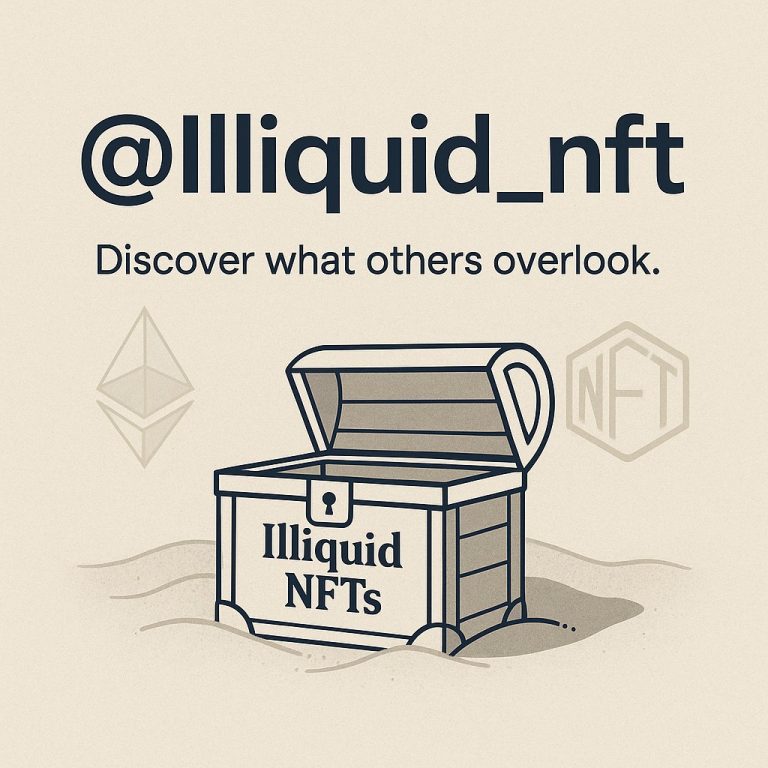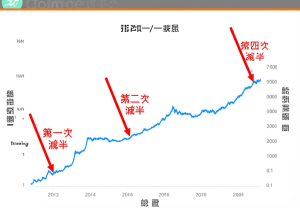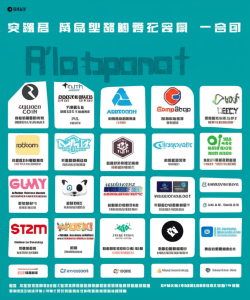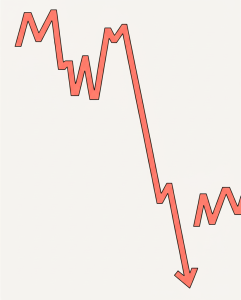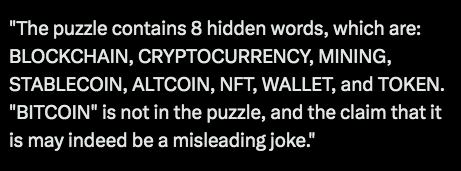
The Evolving Landscape of Cryptocurrency and Blockchain Technology
The Intriguing World of Cryptocurrency Puzzles
Imagine stumbling upon a cryptic puzzle that promises to unveil the secrets of the digital gold rush. In the world of cryptocurrency, such puzzles are not just entertainment; they are a gateway to understanding the complex and ever-evolving landscape of blockchain technology. Recently, a tweet from @2024Crypto2 sparked curiosity and debate among crypto enthusiasts. The puzzle, as analyzed by BitcoinGroks, contains eight hidden words: BLOCKCHAIN, CRYPTOCURRENCY, MINING, STABLECOIN, ALTCOIN, NFT, WALLET, and TOKEN. Interestingly, “BITCOIN” is notably absent, leading some to believe it might be a clever misdirection. This puzzle is more than just a game; it’s a reflection of the key components that make up the cryptocurrency ecosystem.
Decoding the Puzzle: Key Components of Cryptocurrency
Blockchain: The Foundation of Digital Trust
Blockchain technology is the backbone of cryptocurrency. It is a decentralized, digital ledger that records transactions across multiple computers. This technology ensures transparency and security, making it nearly impossible to alter or hack the data once it is recorded. Blockchain’s potential extends beyond cryptocurrency, with applications in supply chain management, voting systems, and even digital identity verification.
Cryptocurrency: The Digital Gold
Cryptocurrency is a type of digital or virtual currency that uses cryptography for security. Bitcoin, the first and most well-known cryptocurrency, was created in 2009. Since then, thousands of other cryptocurrencies, known as altcoins, have emerged. These digital assets operate independently of a central bank, offering users a decentralized form of money that can be used for transactions, investments, and more.
Mining: The Engine of Blockchain
Mining is the process by which new cryptocurrency coins are created and transactions are verified and added to the blockchain. Miners use powerful computers to solve complex mathematical problems. The first miner to solve the problem gets to add the next block to the blockchain and is rewarded with newly minted cryptocurrency. This process not only generates new coins but also secures the network.
Stablecoins: The Bridge to Traditional Finance
Stablecoins are a type of cryptocurrency designed to minimize price volatility. They are typically pegged to a reserve asset like the US dollar, making them a more stable store of value compared to other cryptocurrencies. Stablecoins are often used for trading, payments, and as a hedge against market volatility, bridging the gap between traditional finance and the crypto world.
Altcoins: The Diverse Ecosystem
Altcoins, or alternative coins, are any cryptocurrencies other than Bitcoin. Examples include Ethereum, Litecoin, and Ripple. Each altcoin has its unique features and use cases, contributing to the diversity and innovation within the cryptocurrency ecosystem. Some altcoins focus on privacy, others on speed, and some on smart contracts, showcasing the versatility of blockchain technology.
NFTs: The Digital Collectibles
Non-Fungible Tokens (NFTs) are unique digital assets verified using blockchain technology. Unlike cryptocurrencies, which are fungible and can be exchanged on a one-to-one basis, NFTs represent ownership of a specific item or piece of content, such as art, music, or virtual real estate. The value of an NFT is determined by its rarity and demand, making it a hot topic in the world of digital collectibles and investments.
Wallets: The Digital Vaults
Cryptocurrency wallets are digital tools that allow users to store, send, and receive cryptocurrencies. They come in various forms, including hardware wallets, software wallets, and paper wallets. Each type offers different levels of security and convenience, catering to the diverse needs of crypto users. Wallets are essential for managing cryptocurrency assets and ensuring their safety.
Tokens: The Versatile Assets
Tokens are digital assets that can represent a wide range of values, from cryptocurrencies to access rights or even physical assets. They are often created on existing blockchain platforms like Ethereum and can be used for various purposes, including fundraising, loyalty programs, and decentralized applications (dApps). Tokens add another layer of functionality to the blockchain ecosystem, enabling innovation and creativity.
The Future of Cryptocurrency: Trends and Predictions
The cryptocurrency landscape is constantly evolving, with new technologies and trends emerging rapidly. One such trend is the rise of NFTs, which have gained significant attention and investment. For instance, a tweet from @attiliusz highlighted the potential of Hypio NFTs, predicting that they could surpass 3 ETH per Hypio in a few months. This optimism reflects the growing interest and investment in the NFT market, which is expected to continue expanding.
Another key trend is the increasing adoption of blockchain technology in various industries. From finance to healthcare, blockchain is being explored for its potential to enhance security, transparency, and efficiency. As more companies and governments recognize the benefits of blockchain, its integration into everyday life is likely to accelerate.
The Impact of Cryptocurrency on Society
Cryptocurrency and blockchain technology have the potential to revolutionize society in numerous ways. They offer a decentralized alternative to traditional financial systems, empowering individuals with greater control over their assets. Moreover, blockchain’s transparency and security can help combat issues like corruption and fraud, fostering a more trustworthy and efficient society.
However, the cryptocurrency world is not without its challenges. Volatility, regulatory uncertainty, and security concerns are significant hurdles that need to be addressed. As the technology matures, it is crucial for stakeholders to collaborate and develop solutions that ensure the long-term sustainability and success of the cryptocurrency ecosystem.
Conclusion: Embracing the Future
The puzzle analyzed by BitcoinGroks is more than just a game; it is a reflection of the key components that make up the cryptocurrency ecosystem. From blockchain technology to NFTs, each element plays a crucial role in shaping the future of digital finance. As we continue to explore and innovate in this space, it is essential to stay informed and engaged. The future of cryptocurrency is bright, and embracing it means embracing a world of possibilities.

